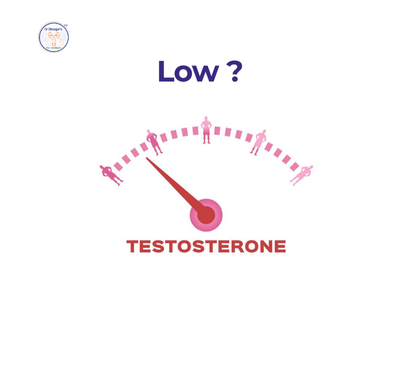Prostate cancer is one of the most common types of cancer among men, especially those over the age of 50. In India, awareness about prostate cancer is still relatively low, which leads to delayed diagnosis and treatment. Understanding the early signs and available treatment options can significantly improve outcomes and even save lives.
This blog aims to educate readers on the causes, risk factors, symptoms, diagnosis, and treatment options for prostate cancer, particularly in the Indian context.
What is Prostate Cancer?
The prostate is a small gland in men located just below the bladder and in front of the rectum. It produces seminal fluid that nourishes and transports sperm. Prostate cancer occurs when cells in the prostate gland start growing uncontrollably.
Not all prostate cancers are aggressive. Some grow very slowly and may not cause any symptoms for years, while others can be highly aggressive and spread quickly.
Prevalence of Prostate Cancer in India
Prostate cancer is the second most common cancer among Indian men in urban areas. According to the Indian Council of Medical Research (ICMR), its incidence is steadily rising due to increasing life expectancy, sedentary lifestyles, and better detection methods.
Key Statistics:
- Median age at diagnosis: 67 years
- 1 in 6 men may be diagnosed during their lifetime
- Higher incidence in metro cities like Delhi, Mumbai, Chennai, and Bangalore
Early Signs and Symptoms
In its early stages, prostate cancer may not cause any noticeable symptoms. However, as the disease progresses, it can cause:
Urinary Symptoms:
- Difficulty starting urination
- Weak or interrupted flow of urine
- Frequent urination, especially at night (nocturia)
- Pain or burning sensation during urination
Sexual Dysfunction:
- Erectile dysfunction
- Painful ejaculation
Other Symptoms:
- Blood in urine or semen
- Discomfort in the pelvic area
- Bone pain (in advanced stages)
It’s important to note that these symptoms can also be caused by non-cancerous conditions like benign prostatic hyperplasia (BPH) or prostatitis.
Causes and Risk Factors
While the exact cause of prostate cancer is unknown, several risk factors can increase a man’s chances of developing it:
Age:
- Risk increases significantly after age 50.
Family History:
- Having a father or brother with prostate cancer doubles the risk.
Diet:
- High-fat diet, red meat consumption, and low intake of fruits and vegetables.
Obesity:
- Linked to a higher risk of aggressive prostate cancer.
Ethnicity:
- African-American men are at higher risk, while Asian men generally have lower rates.
How is Prostate Cancer Diagnosed?
1. Digital Rectal Exam (DRE):
A physical exam where the doctor feels the prostate for abnormalities.
2. Prostate-Specific Antigen (PSA) Test:
A blood test measuring PSA levels; high levels may indicate cancer.
3. Imaging Tests:
- MRI or TRUS (transrectal ultrasound) to visualize the prostate.
4. Prostate Biopsy:
A sample of prostate tissue is taken and examined under a microscope.
Stages of Prostate Cancer
Prostate cancer is staged from I to IV:
- Stage I: Cancer is small and confined to the prostate.
- Stage II: Cancer is more advanced but still within the prostate.
- Stage III: Cancer has spread beyond the prostate to nearby tissues.
- Stage IV: Cancer has spread to distant parts like bones or lymph nodes.
Treatment Options
Treatment depends on the stage of cancer, age, overall health, and patient preferences.
1. Active Surveillance:
- For low-risk, slow-growing cancer
- Regular monitoring with PSA tests and biopsies
2. Surgery (Radical Prostatectomy):
- Removal of the entire prostate
- Recommended for localized cancer
3. Radiation Therapy:
- External beam or brachytherapy (internal radiation)
- Used for both early and advanced stages
4. Hormone Therapy:
- Reduces testosterone, which fuels cancer growth
- Often combined with other treatments
5. Chemotherapy:
- Used in advanced or hormone-resistant cancer
6. Immunotherapy and Targeted Therapy:
- Newer options for advanced cases
Side Effects of Treatment
- Urinary incontinence
- Erectile dysfunction
- Fatigue
- Bowel issues
- Emotional and mental stress
Support from family, counseling, and lifestyle changes can help manage these side effects.
Prevention and Lifestyle Tips
While prostate cancer can’t be entirely prevented, healthy lifestyle choices may reduce your risk:
- Eat a diet rich in fruits and vegetables
- Exercise regularly
- Maintain a healthy weight
- Avoid smoking and limit alcohol
- Regular check-ups after age 50
Prostate cancer is a serious health concern but can be managed effectively with timely diagnosis and proper treatment. Indian men are encouraged to go for regular check-ups, especially after the age of 50. Awareness, combined with medical support, can help fight prostate cancer and lead to a better quality of life.
FAQs
Q1. What is the PSA test, and when should I get it?
A PSA test measures prostate-specific antigen levels in the blood. Men above 50 or those with risk factors should consider regular PSA screenings.
Q2. Can prostate cancer be cured if detected early?
Yes. When diagnosed early, prostate cancer has a high survival rate. Localized cancers can often be treated successfully with surgery or radiation.
Q3. Is prostate cancer hereditary?
Yes, genetics can play a role. If your father or brother had prostate cancer, your risk is significantly higher.




